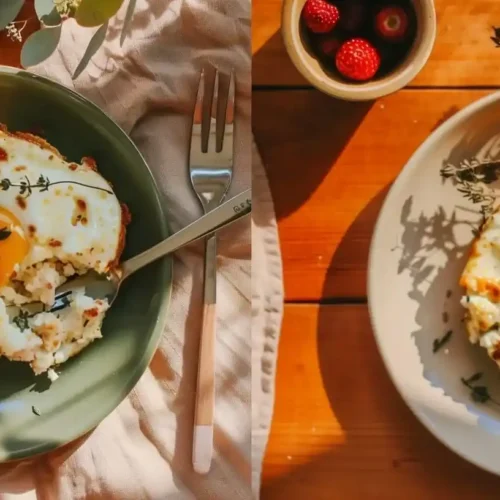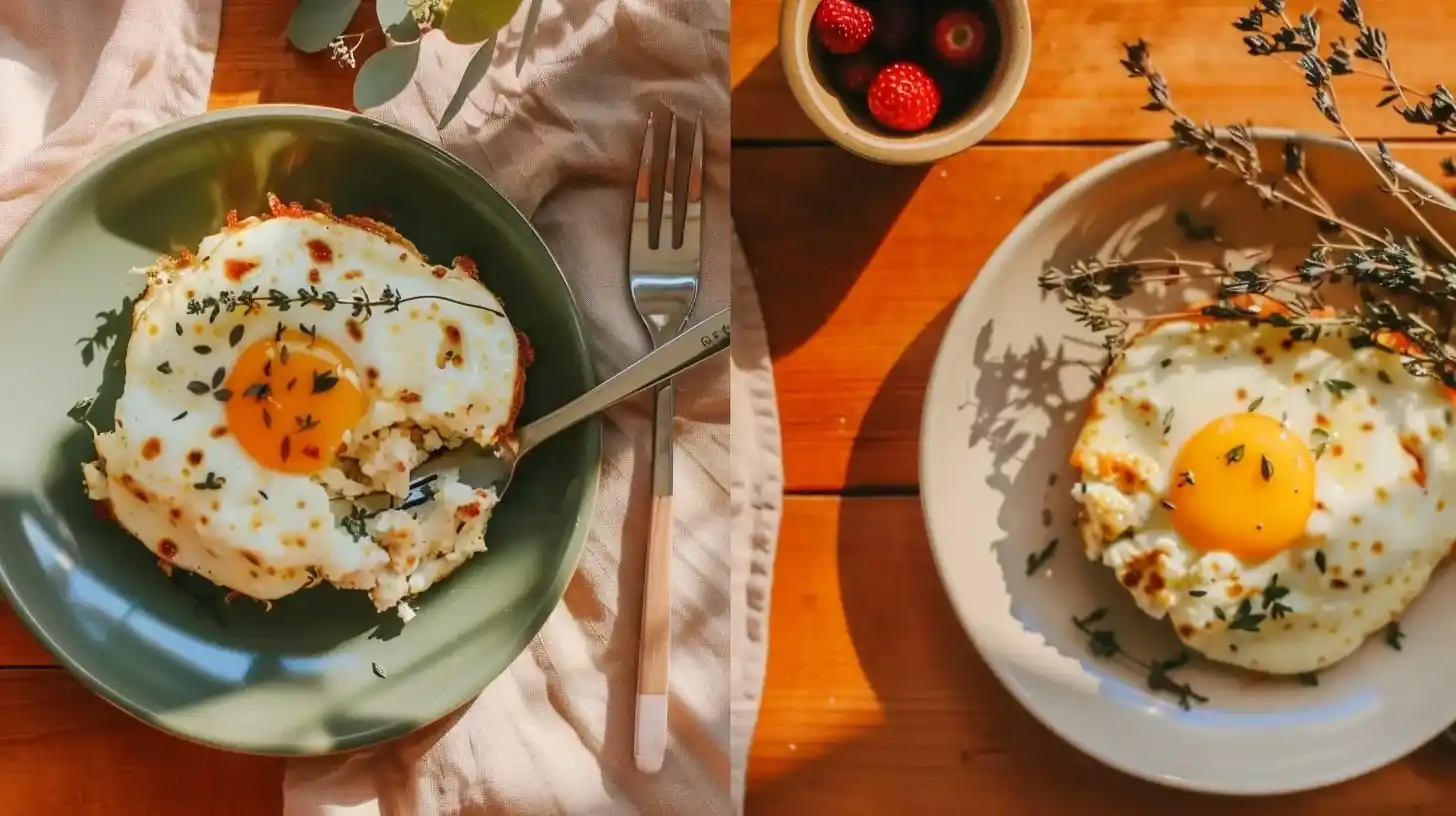The disappointment of pulling a beautiful golden egg bake from the oven only to discover a rubbery texture is one I know all too well. My first attempt at serving my grandmother’s cherished breakfast casserole to my in-laws left me puzzled and embarrassed when my fork met resistance instead of tender custard. “why is my egg bake rubbery?” I wondered silently as I watched everyone politely struggle through their servings.
That evening, I called my grandmother in tears. “Sounds like you’ve run into the egg bake’s most common problem,” she comforted me. “I should have warned you about that.” What followed was a warm conversation about the science of eggs, heat, and moisture—cooking wisdom passed down through generations that transformed my understanding of this seemingly simple dish.
My grandmother explained that eggs are remarkably sensitive to cooking conditions, and small adjustments make the difference between a tender, silky egg bake and one that resembles a rubber doorstop. “Cooking is part science, part love,” she reminded me. “You need both for the magic to happen.”
Table of Contents
Why Understanding Egg Texture Matters
Solving the “why is my egg bake rubbery” dilemma helps you create consistently delicious breakfast casseroles. Here’s why mastering egg texture is worth your attention:
- Guest satisfaction: Tender egg bakes impress family and visitors with restaurant-quality results.
- Food waste prevention: Knowing proper techniques ensures your ingredients create meals people actually want to eat.
- Cooking confidence: Understanding egg chemistry builds transferable skills for other dishes.
- Recipe adaptability: Learning the principles allows you to modify recipes without texture issues.
- Family tradition: Perfecting heirloom recipes preserves precious culinary heritage.
While my protein-packed egg breakfasts collection includes various techniques, the perfect egg bake should have a tender, custard-like texture. Understanding the difference between proper texture and rubbery results enhances all your cozy breakfast recipes, particularly when you need to understand what is the difference between egg bake and frittata.
Why Is My Egg Bake Rubbery? 3 Common Culprits

1. Overcooking: The Temperature-Time Balance
The most frequent answer to “why is my egg bake rubbery” is simply overcooking. Eggs contain proteins that tighten when heated, and when exposed to heat too long, they contract excessively, squeezing out moisture and creating that characteristic rubber-like consistency.
My mother taught me to watch for visual cues rather than strictly following recipe times. “An egg bake is done when it’s just set in the middle with a slight jiggle,” she would demonstrate, gently shaking the pan. “It will continue cooking for a few minutes after you take it out.” I’ve found that using an instant-read thermometer helps tremendously—removing the egg bake when the center reaches 160°F ensures food safety without crossing into rubbery territory.
Oven temperature matters tremendously too. When my new oven produced consistently overcooked egg bakes, I discovered it ran 25 degrees hotter than the setting indicated. Investing in an oven thermometer solved this mystery and saved countless future breakfasts.
2. Dairy Ratios: The Moisture Balance
Another crucial factor in why egg bakes turn rubbery involves dairy proportions. Insufficient milk, cream, or cottage cheese in egg bake reduces the moisture that creates that desirable custard-like texture.
“Eggs need enough liquid to stay tender,” my grandmother explained. “Think about how different scrambled eggs are when you add a good splash of milk.” The ideal ratio is generally ½ cup of dairy for every 4-5 eggs, though this varies based on other ingredients’ moisture content.
When adapting recipes, I’ve learned to consider the water content of added vegetables. Mushrooms and zucchini release significant moisture during cooking, while dense potatoes absorb liquid. These factors require thoughtful adjustment of dairy quantities to prevent the dreaded rubbery outcome.
3. Mixing Method: The Protein Development
The most surprising answer to “why is my egg bake rubbery” emerged from a conversation with my culinary school-trained cousin. She explained that aggressive mixing develops gluten in any flour present and overworks the egg proteins, creating a tougher final texture.
“Think of eggs like delicate flowers,” she advised. “Whisk them enough to blend the whites and yolks, but don’t beat them as if they’ve insulted your family.” This gentle approach, combined with folding in other ingredients rather than vigorously stirring, creates a tender result.
I’ve found this particularly important when using ingredients like pancake mix or bread in breakfast casseroles. These flour-containing components respond poorly to overmixing, instantly creating a denser, less appealing texture.
Secrets to Fixing Rubbery Egg Bakes
Now that we understand the problems, let’s explore the solutions that ensure your next egg bake emerges tender and delicious:
Secret #1: Lower and slower wins the race Reduce your oven temperature by 25°F from what most recipes suggest (usually to 325°F) and extend the cooking time slightly. This gentle approach allows eggs to set without overcooking. I cover my egg bakes with foil for the first two-thirds of baking time, removing it for the final stretch to achieve a golden top without overcooking the interior.
Secret #2: Create an insurance policy with extra dairy Increasing dairy slightly beyond recipe recommendations provides protection against rubbery texture. For a standard 9×13 egg bake, I add an extra ¼ cup of dairy beyond the recipe’s suggestion. Half-and-half or whole milk provide ideal results, though even a splash of heavy cream can transform the texture if that’s what you have available.
Secret #3: Water bath for foolproof results For special occasions or when serving guests, place your egg bake dish inside a larger pan filled with about 1 inch of hot water before putting it in the oven. This bain-marie method ensures gentle, even heating that virtually guarantees a silky texture. My grandmother reserved this technique for holiday mornings, and it’s never once failed to produce perfect results.
Answers to Your Egg Bake Questions
Q: Can I rescue an egg bake that’s already turned rubbery?
Unfortunately, once proteins have tightened, there’s no true way back to ideal texture. However, a warm sauce (like hollandaise or even simple cheese sauce) served over the top can significantly improve the eating experience. This has saved more than one of my breakfast disasters!
Q: Does the type of baking dish affect rubbery texture?
Absolutely! Metal pans conduct heat more quickly and can lead to overcooked edges before the center sets. Ceramic or glass dishes distribute heat more gradually and evenly. My grandmother’s egg bakes were always perfect because she insisted on using her old ceramic casserole dish rather than modern metal pans.
Q: How do add-ins affect egg bake texture?
Ingredients with high water content (like tomatoes or spinach) release moisture during cooking, which can affect texture. Either pre-cook these ingredients to remove excess moisture or adjust your dairy slightly upward to compensate. Dense additions like bread in a strata need adequate soaking time to absorb liquid before baking.
The Joy of Tender Egg Bakes
Understanding why egg bakes turn rubbery has transformed my breakfast cooking, turning potential disappointment into consistent success. That initial kitchen failure with my in-laws has become a family story we now laugh about, especially since I’ve redeemed myself many times over with perfectly tender breakfast casseroles.
The science behind egg cookery may seem technical, but it’s really about developing an intuitive feel for these sensitive ingredients. Each time you make an egg bake with these principles in mind, you’re not just creating breakfast—you’re honoring the wisdom of generations of home cooks who learned through trial, error, and the passing down of kitchen secrets.
I hope these insights help solve your “why is my egg bake rubbery” dilemma and lead to many delicious breakfast gatherings around your table!
With warmth, Sophia

Perfect Tender Egg Bake
Ingredients
- 8 large eggs
- 1¼ cups half-and-half or whole milk
- 1 cup shredded cheese (Swiss, cheddar, or your preference)
- 2 cups add-ins (pre-cooked vegetables, meats, potatoes, etc.)
- ¼ cup fresh herbs, chopped (parsley, chives, basil, etc.)
- ½ teaspoon salt
- ¼ teaspoon black pepper
- ⅛ teaspoon nutmeg (optional)
- 2 tablespoons butter for greasing baking dish
Instructions
- Preheat oven to 325°F (lower than typical recipes to prevent rubbery texture). Position rack in center of oven.
- Generously butter a 9×9-inch ceramic or glass baking dish (these materials distribute heat more gently than metal)
- In a large bowl, gently whisk eggs just until yolks and whites are combined – do not overmix.
- Add half-and-half, salt, pepper, and nutmeg to the eggs and whisk gently until combined.
- Spread half of your add-ins in the prepared baking dish, then sprinkle with half the cheese.
- Add remaining add-ins and gently pour the egg mixture over everything. Sprinkle remaining cheese on top.
- Optional for foolproof results: Place the baking dish in a larger pan and add hot water to the larger pan until it reaches about 1 inch up the sides of your egg bake dish.
- Bake for 40-45 minutes, or until the center reaches 160°F and is just set with a slight jiggle. The egg bake will continue cooking slightly after removal.
- Allow to rest for 10 minutes before serving, which lets the texture stabilize for perfect slicing.

